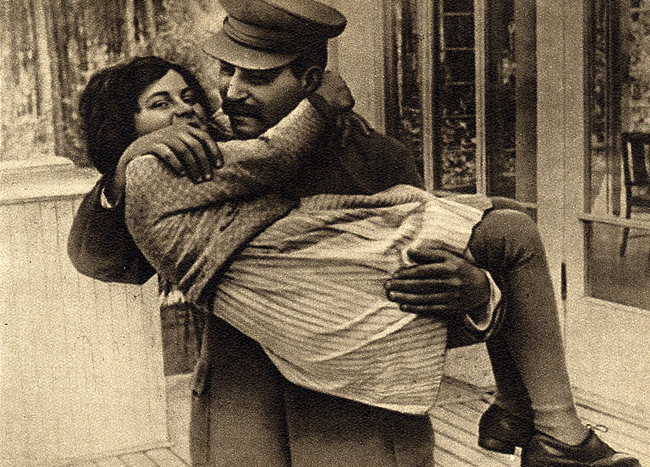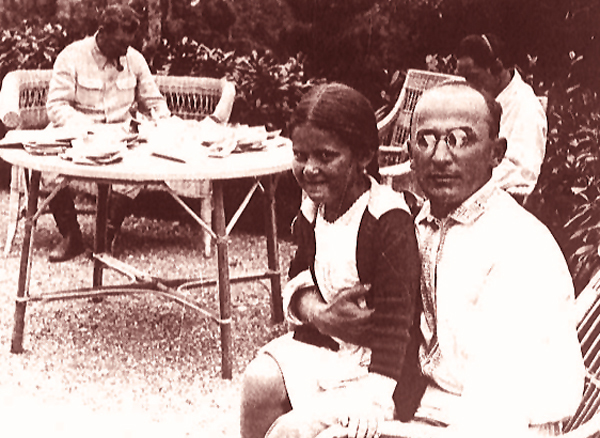Sci-Tech
Uncle Joe’s little sparrow folds her wings: Stalin’s daughter dies at 85

One of the strangest lives of the 20th century has come to a close. Lana Peters, born Svetlana Stalina, has passed away in Wisconsin at 85. What sense do we make of her very strange life? By RICHARD POPLAK.
When Svetlana Stalin, aka Svetlana Alliluyeva, and latterly Lana Peters, arrived in the US in 1967—the most famous Soviet defection other than Rudolph Nureyev—the dictator’s daughter was elevated to the level of a saint. According to George Lois, the legendary ad-man-cum-cover-designer of Esquire, “she was becoming a bore”.
She arrived in the US to orchestrated fanfare, clutching a memoir called Twenty Letters to a Friend, for which she would earn $2,5 million, a staggering amount for the time. Said Lois, “She was taken in hand by the smart boys in publishing and our red-baiting state department,” and he “just knew” she was a fake. His studio is resplendent in dozens of images of Mama Svetlana. He took a grease pencil, scribbled her father’s moustache on her upper lip, and created one of the more notorious magazine covers of all time.
In fairness to Svetlana, hers was a life so strange and otherworldly that calling her a fake is to misunderstand and undervalue the trauma of her early years, not to mention the streak of insanity that could have been the birthright of one of Stalin’s brood. She was born three times, the first as Svetlana Stalina, her father’s “little sparrow,” on 28 February 1926. Her father lavished affection upon her, cuddling her to his chest as he sent tens of millions of his countrymen to their deaths. This was not a recipe for a happy home. When Svetlana was nine, her mother, Stalin’s second wife, Nadezhda Alliluyeva, committed suicide. Svetlana was told that she had died of appendicitis, and only learnt the truth when she was 16.
But by then she was a Russian celebrity, the cute, curly-topped princess after whom hundreds of thousands of girls, as well as a perfume, were named. She was never beautiful, but there was something compelling about her image—her father’s features softened and rounded and made somehow less dangerous. But dangerous he was, a fact Svetlana was soon to learn. Her brother Yakov was captured by the Germans and, when Stalin refused to exchange him for a Nazi general, was executed. Consumed by the war, Papa Joe was abusive at home, sending her first lover, a Jewish filmmaker, to Siberia for 10 years.

Now a teacher and a literary translator, she briefly married another Jew, whom Stalin refused to meet. They had a son named Iosif. After their divorce, she married Yuri Zhdanov, son of Stalin’s henchman Andrei Zhdanov, and they would have a daughter, Yekaterina. Their marriage ended shortly thereafter. By this time, Stalin’s health was failing and her life descended into the sinister realm of The Butcher’s daughter. When he died in 1953, his legacy challenged by the men that succeeded him, Svetlana’s life was further micromanaged. She was reborn as Svetlana Alliluyeva, taking her mother’s name, convincing the Khrushchev regime to allow her to go to India. There, she dodged the KGB and made her way to the US embassy, begging for asylum.
This wasn’t an easy decision for the Lyndon Johnson administration, who did not want to scuttle improving relations with the Soviets. But the PR proved too compelling. So in April 1967, Svetlana Alliluyeva arrived in the US, and her face was plastered on every newspaper and every magazine cover, “except Popular Mechanics,” according to George Lois. The KGB considered murdering her, but thought better of it. So she drifted into life in the US, denouncing the Soviet Union in the most fulsome manner, exploring religion after cult after commune.
She burned her Soviet passport, slammed her father as “a moral and spiritual monster”, and happened to find new love with William Wesley Peters, who was the late Frank Lloyd Wright’s architectural apprentice. They had a child, Olga, but Svetlana, by then Lana Peters, could not stand communal life on Lloyd Wright’s Taliesin West compound. She divorced Peters, took Olga with her and fell off the radar.
Or, not completely. This is the point where her narrative frays and comes to pieces; where she becomes an artefact of the trauma of the 20th century. She moved with Olga to England, and began longing for Russia. In 1984, Lana Peters moved back to the Soviet Union, this time denouncing the West as a prison, where she “had not known a day of freedom”. She spent two years there, rejected by her children, ignored by the government. In 1986, after a spell in her ancestral Georgia, she moved back to the US. By that time, the USSR, was communism’s Nirvana no more.
So she moved to Wisconsin, apparently broke, drifting from home to home, unable to settle down. She claimed to have given the book profits to charity. Her mood was unhinged and dark. “He broke my life,” she said of her father, “wherever I go, here, or Switzerland, or India, or wherever. Australia. Some island. I will always be a political prisoner of my father’s name.” In this, Lana Peters was the representative Russian of her generation. She died at the age of 85, at or near the Richmond Centre, and with her goes the last physical link to Joseph Vissarionovich Stalin; she was the last Russian alive to have felt his paternal embrace.
And yet in Russia’s new leader, one sees shades of the old. Svetlana Stalina’s life encompassed the sweep and terror of the 20th century – that she died alone, broke and broken in the American Midwest seems entirely, poignantly appropriate. DM
Read more:
- “Lana Peters, Stalin’s Daughter, dies at 85” in The New York Times;
- “BBC On This Day: 1967 Stalin’s Daughter Defects to West” on BBC.com.
Main photo: Courtesy of Icarus Films






 Become an Insider
Become an Insider